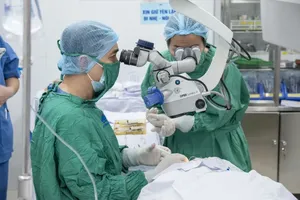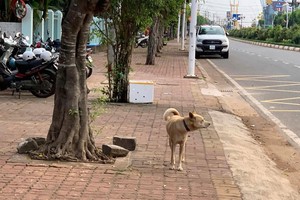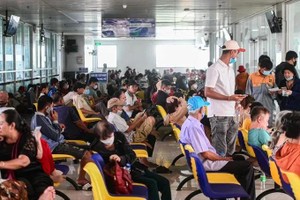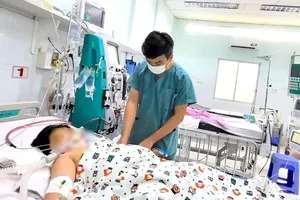The information was provided by the Ho Chi Minh City Department of Health on December 17 late amid the outbreak of an undiagnosed disease in the Democratic Republic of Congo, which rises in both infectious cases and fatalities.
According to Associate Professor, Dr. Tang Chi Thuong, Director of the Ho Chi Minh City Department of Health, Tan Son Nhat International Airport has not exploited any direct flights from the Democratic Republic of Congo. Passengers from Congo will have to transit through countries in Europe, the Middle East, or Asia before arriving at Tan Son Nhat International Airport.
Reports from the World Health Organization (WHO) show that the country's four international airports including Ndjili International Airport in Kinshasa, Lubumbashi International Airport in Lubumbashi, Goma International Airport in Goma and Bangoka International Airport in Kisangani are not in epidemic areas now.
Regarding maritime routes, the Democratic Republic of Congo has only one seaport, named Boma in Kinshasa, which is not in an epidemic area. Normally, passengers take about 30-40 days to travel from here to Ho Chi Minh City Seaport, which is sufficient time to detect any diseases if any.
In order to proactively be ready to respond to disease outbreaks, the Ho Chi Minh City Department of Health has instructed the Ho Chi Minh City Center for Disease Control to strengthen surveillance efforts to identify and respond to cases promptly, continuously connect with relevant units to update information and prepare response plans according to various levels of disease risk.
The International Health Quarantine Department must work on duty 24/7 at Tan Son Nhat International Airport and Ho Chi Minh City Seaport to control the risks of infectious diseases entering Ho Chi Minh City from abroad.

At Tan Son Nhat International Airport, health quarantine officers continuously monitor incoming passengers through a remote body temperature measurement system and observe any unusual health symptoms while passengers move normally without any restrictions, informed Associate Professor, Dr. Tang Chi Thuong.
People are recommended to avoid traveling to epidemic areas unless necessary. For those who have traveled through epidemic areas, if they have any suspected symptoms, they should immediately go to a healthcare facility and provide healthcare workers with full information about their travel itinerary for timely diagnosis and treatment, as well as to limit the spread of the disease to the community.
























